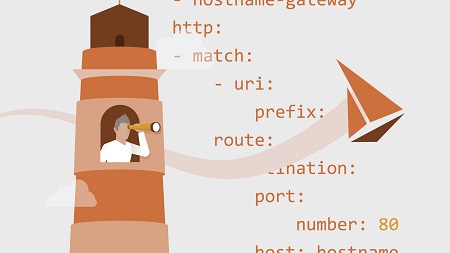
English | MP4 | AVC 1280×720 | AAC 48KHz 2ch | 1h 22m | 221 MB
Discover how to enhance your cloud development with Istio, a powerful technology supporting a service-mesh based connectivity model for microservice applications in a distributed management environment like Kubernetes. Services mesh in general, and Istio specifically, addresses some of the key issues that development teams run into when building microservices-based systems. In this course, instructor Robert Starmer shows how to enable Istio and integrate it into any Kubernetes-based application environment, highlighting key aspects of the Istio service mesh along the way. Robert covers how to approach traffic routing and load balancing; establish MTLS credentials and connect to non-MTLS services; improve microservice robustness; and more.
Topics include:
- Adding Istio to a microservice
- Traffic routing and deployment
- Creating advanced route rules with Istio
- Modifying routes for Canary deployments
- Establishing MTLS credentials
- Connecting to non-MTLS services
- Connecting Istio to OpenTracing
- Improving microservice robustness
- Forcing aborts in specific applications
Table of Contents
1 Automated service mesh with Istio
2 What you should know
3 Istio, Kubernetes, and microservices
4 Installing Istio
5 Injecting Istio into a microservice
6 Verifying that Istio is meshing
7 Converting to proxy auto-injection
8 Ingress gateways and virtual services
9 Configuring rules to link specific labels
10 Creating advanced route rules with Istio
11 Adjusting Istio load-balancing ratios
12 Modifying routes for Canary deployments
13 Challenge Testing a new release
14 Solution Testing a new release
15 Establishing MTLS credentials
16 Connecting to non-MTLS services
17 Getting into the MTLS mesh
18 Connecting Istio to OpenTracing
19 Following a multi-service path
20 Understanding request latencies
21 Injecting faults into service response
22 Force aborts in specific applications
23 Mirroring connections
24 Circuit breaker tests via timeouts
25 Challenge Add a random failure
26 Solution Review response injection
27 Next steps
Resolve the captcha to access the links!